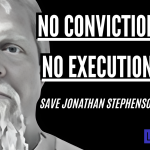Edwin Friedman said there are basically three characteristics common to any system that becomes imaginatively gridlocked. Such systems are always trying harder, looking for answers rather than reframing questions, and engaging in either/or thinking that creates false dichotomies.
In his now classic A Failure of Nerve: Leadership in the Age of the Quick Fix, he helps readers consider strategies for breaking through such gridlock by considering third ways beyond false dichotomies, reframing the questions, and trying differently.
He then says, “Many have pointed to the relationship between risk and imagination and observed that it is safer to confine one’s thoughts to the conventional. In the process of reorientation, however, the connection is far more fundamental. There is a relationship between risk and reality that involves not risk and one’s sense of reality, which is a psychological concept, but nerve and reality itself. If imagination involves risk, the willingness to risk is critical to validating one’s perceptions.”
It seems the more anxious we become as a society, the more risk averse we become. Yet to achieve the imaginative breakthroughs we really need, we’re going to need strategies that take risks in order to discover new realities. So here I take Friedman’s three main points and place them in conversation with situations in my own life as a pastor and citizen, hoping the analogies are as helpful to you as a reader as Friedman’s analogies (analyzing the history of new world discovery in the 15th century) have been for me.

Mistakes Are Not That Important
In communities all across our country, incarceration patterns are impacted by our longstanding and problematic war on drugs. Over the past couple of decades, we prioritized the criminalization and policing of drug use over many other issues. During the same period, counties all across the country closed mental hospitals, marking a cultural shift that attempted to find more humane and in community ways to treat mental health, but in the process leaving many communities stuck housing those previously housed in mental hospitals in county jails.
Today, what this means in practice is that upwards of 90% of those incarcerated in county jails are there either for drug violations or as a result of unaddressed mental health issues… and also a combination of both, because quite a bit of drug use and abuse is a form of self-medicating.
For example, in Washington County, Arkansas, the jail is becoming over-crowded as the general population of the county increases. Everyone knows the majority of those in the county jail are there for drug-related offenses and that many inmates, perhaps a majority, are there because of their mental health as well as their substance abuse.
So the “try harder” solution is to build a bigger jail. Even if the jail doesn’t treat mental health very well, and it doesn’t slow the use and abuse of illegal drugs (recidivism in our county jail is huge, especially drug-related) it seems to be the only solution we can come up with in the present economic and cultural climate.
Jails aren’t working? Build a larger jail! Drug abuse is increasing while we incarcerate more people? Incarcerate them even more?
This is the try harder approach. It’s also in a sense looking for an answer instead of reframing the question.
The reframed question needs to be: Why is there such a huge pipeline funneling people into our jails? And why do we only have one solution for the problems of drug addiction and mental health?
There are communities experimenting with alternatives to detention. These communities have reframed the questions, at least a bit.
For example, Garland County near Hot Springs has introduced a wide range of volunteer led programs at their county jail that have contributed to a significant reduction in recidivism. Other communities across the country are experimenting with other models like drug court, bond reform, and mental health stabilization units, all of which attempt to address the pipeline to jail. None of these are the end-all-be-all alternative to jails (that would be either/or thinking), but they are attempting to discover a third way beyond our current impasse.
A lot of these experiments are going to fail. Heck, even the current model is failing. Jails aren’t working for us. But the problem with risk aversion and anxiety is that it drives us to simply keep doing the same thing, just harder.
A community committed to real change will become more comfortable with lots of various kinds of failures. They will feel free to fail.
They’ll build a Crisis Stabilization Unit only to discover that it doesn’t have enough beds to reduce the jail crowding.
They’ll passively assume funding for new defenders and prosecutors can only come from state-level appropriations, while overlooking that maybe the county or city should pay for such staff. Maybe they’ll mistakenly assume the only option is state funding. They might elect judges or other officials who have no ability to think creatively, and are open to willingly fail, because their re-election is on the line.
They might focus on the injustice of the money bond system, realize it’s not effective to reform it, but in the process chart unknown terrain in contexts of poverty that reveals serendipitously what does need to happen to lower incarceration rates among those who can’t afford bond.
The point is, to get out of the situation we’re currently in, we can’t just keep working harder at the same things that are failing us. Failures will be essential to discovering… serendipity.
Maintain A Willingness To Encounter Serendipity
“If making mistakes is relatively unimportant in an atmosphere of adventure, willingness to encounter serendipity is vital to its continuing spirit.”
Now I’m changing contexts. I pastor a mid-sized congregation in Northwest Arkansas. We’re a significant minority in our state. Our kind of Lutheran makes up about .002% of the population. I think that is a lower concentration than the amount of yeast needed to make bread rise.
We’re also LGBTQ+ affirming. I’ll marry same-gender couples, and we welcome LGBTQ+ leadership on council and in teaching and preaching and everything.
So, imagine, this is who we are, a progressive Christian congregation in a red state and purple region. That we are thriving as the kind of congregation we are in the kind of region we inhabit makes us feel like rock stars, and like we’re hanging by a thread, all of the time.
Recently we’ve been having a serious conversation as a congregation about hiring a youth and family director. The risks are primarily financial. The potential benefits are many, in particular expanding the ministry we can do among and for the families of our congregation and wider community.
We want our children form in the values and faith we share. We think a youth director can help us do that.
Expanding our staff is a grand experiment. There’s potential for failure. But what Friedman reminds us of in the meantime is something else altogether: to embark on an adventure, like sailing as a progressive Christian Lutheran Church in mid-south and raising children in that context, the bigger thing is to be open to serendipity.
What will come up while we engage this process? What accident, of luck or grace, might occur.
I’ll tell you one thing that happened: our neighbors and friends, the Episcopalians down the street, decided to hire a youth director at precisely the same time we are doing so.
What’s that about?
I’ll tell you another serendipitous thing: I’ve seen more than one friend in our denomination across the country express interest in such work. The accident of that timing is intriguing. What does it mean?
I’ll tell you another serendipitous thing: A couple of big grant-giving agencies in our state have approached our little congregation lately to ask what it might mean to financially support the catalytic work we are doing in our community (providing sanctuary for immigrants, resettling refugees, supporting campaigns like the Poor Peoples’, ministering among and with the LGBTQ+ community). What does that mean?
You can’t plan an accident. You can’t cast a spell to invoke grace. Both come by chance, or the grace of God. But you can be ready for such. You can keep your eyes open.
I mean, maybe such moments mean we should be open to deeper ecumenical engagement with neighbor churches… or perhaps we are supposed to connect with a gifted family who wants to move here… or maybe we should explore being an altogether new kind of church altogether, a 21st century catalyzer of good?
I don’t know. All I know is I want to maintain my willingness to be open to serendipity when it arrives.
Overcoming Imaginative Barriers Is About Willing Our Way Through Emotional Barriers
Everybody knows we are church in a secularizing era. Worship attendance is declining. There’s a widespread decline in commitment in the United States to every kind of religious institution, across the board.

This decline isn’t going to change. Some local contexts are coming up with creative solutions to live in the ruins of what remains, like rural churches creatively pooling resources.
Facing this decline, for the time-being I think the church will be like runners in face of their inability to break the four-minute mile, or spelling bee participants confronted with spelling words in the English language.
But… remember that after the four-minute mile was broken, within the next year multiple other runners also broke the mile. And the year that the spelling bee was “broken,” eight young people broke it together at the same time, defeating the spelling bee itself, something no one until this year even imagined as a possibility.

In fact, let’s sit with the spelling bee a bit. The spelling bee has always been approached as contest that eventually defeats all participants, save one who survives but presumably could at any moment slip. But this year, eight young people together with great coaches and family support thought about the bee differently, and arrived at the end of the bee, all champions together.
So, going back to the church, until such time as people of faith in secularizing contests will themselves into a new imagination, the church will likely be “beat” by secularization. But this assumes a lot of things.
One thing it assumes is that numeric decline is “decline.” What if it isn’t that at all, but a concentrating of a whole different kind of community?
Friedman’s point on this is that the real barrier is an emotional one. It’s not until we realize the real barrier is our response to the perceived decline, and not the decline itself, that we’ll look to our own way of being in the system and make changes in ourselves.
And at least one massive part of that is emotionally untethering ourselves from the nostalgia of what supposedly was in order to fall in love with what is to come.
Then, because of that love, committing heart and soul, and saying, “I’m going there.”
Paul has a line for this. He says in Philippians, “Beloved, I do not consider that I have made it my own; but this one thing I do: forgetting what lies behind and straining forward to what lies ahead, 14 I press on toward the goal for the prize of the heavenly call of God in Christ Jesus.”
Like a lot of things, the church will only overcome the emotional barrier presented by religious decline when it forgets what lies behind and looks ahead to all the good that might come precisely in and through such “decline.”
Could to a lot worse than to remember another definition of decline: the changing of the form of a word, generally to express its syntactic function in the sentence, by way of some inflection.
What if decline is about getting grammar right and discovering new ways of speaking?
















